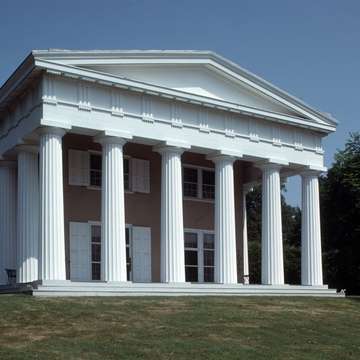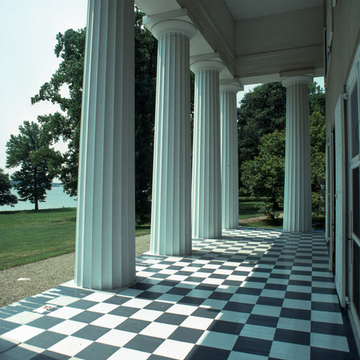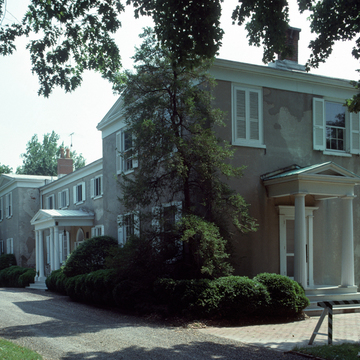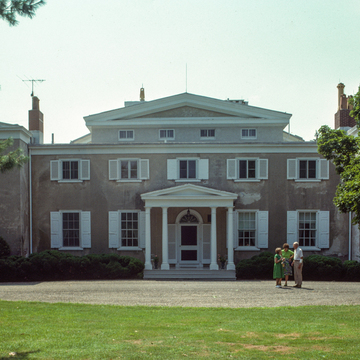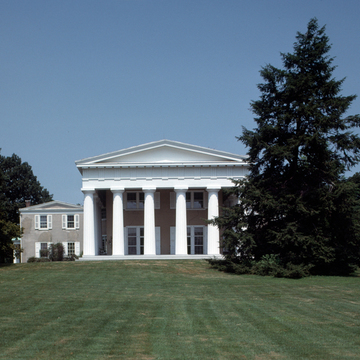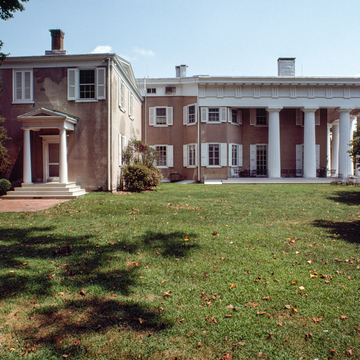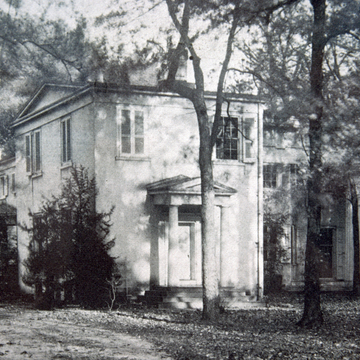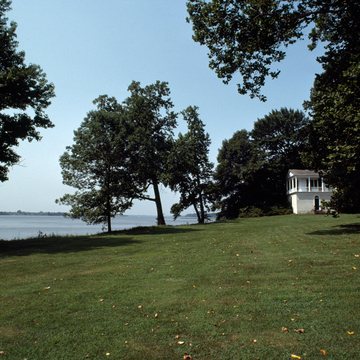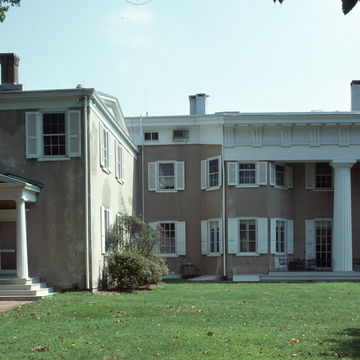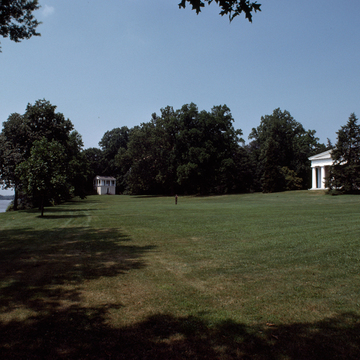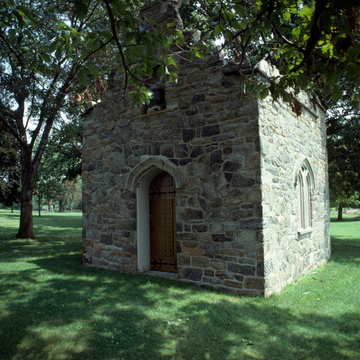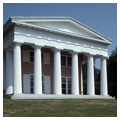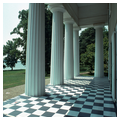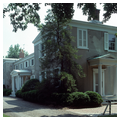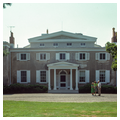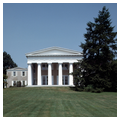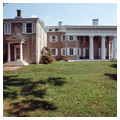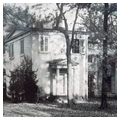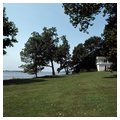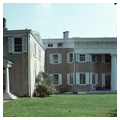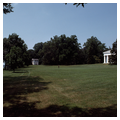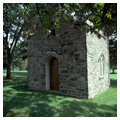Andalusia began in 1795 as the modest country seat of Philadelphia merchant John Craig. It followed the norms of regional gentlemen's houses with a central door, rubble walls stuccoed and scored as ashlar, and the simplified moldings in accord with early republican taste that is generally English Regency in derivation. In 1807 Craig retained Latrobe to make what Latrobe referred to as “prodigious” improvements, adding a columned screen and one-story pavilions at each end of the north facade facing the drive. These elements were largely rebuilt in 1834 under the direction of Walter for Nicholas Biddle, who acquired the house by marriage. (Biddles and Craigs are buried in the same section of St. Peter's churchyard [ PH18].) The most remarkable feature of Walter's work is the Doric temple front that he projected from the original wing to overlook the river. Massive white-painted, fluted, wood columns support the blank pediment. Small bays at the rear make the transition to the rebuilt front and blur the anomaly of the rear wing. From the river the effect of a miniature Greek mansion amidst the lawns and great trees is both agreeable and startling.
At the time of the reconstruction, Biddle was president of the Second Bank of the United States ( PH12.11) and was engaged in a battle with President Jackson as to whether the bank would be the central bank of the nation or its responsibilities divided among regional centers. Proclaiming his goal of making Philadelphia the “Athens of America,” Biddle advocated Greek Revival architecture as emblematic of the city's role in shaping the American nation. With Andalusia, and Biddle's other collaboration with Walter, the massive Greek temple for Girard College ( PH127), Biddle draped himself in the Greek tunic. The house was visited in 1859 and described in his journal by Philadelphian Sidney George Fisher, who was characteristically peevish, “It is a beautiful place of 100 acres on the river and much expanse was lavished on it by [Biddle] in the time of his prosperity. The house is of Grecian architecture, a copy of the front of the Bank of the U.S. now the Custom House, a style unfit for dwelling, especially in the country, and therefore in bad taste, but nevertheless in itself beautiful. It is large, with many rooms handsomely furnished in the manner of thirty years ago.” Andalusia remains very much as Fisher described it, replete with its original furnishings and with many of its outbuildings including its billiard room (1815–1816; 1830 remodeled, Thomas Walter), a Gothic Revival cottage now covered with shingle over original scored stucco, and ruins of graperies (1835–1836, Thomas U. Walter; 1915 modified, Mellor and Meigs). The house and grounds remain private but are open on special occasions.














